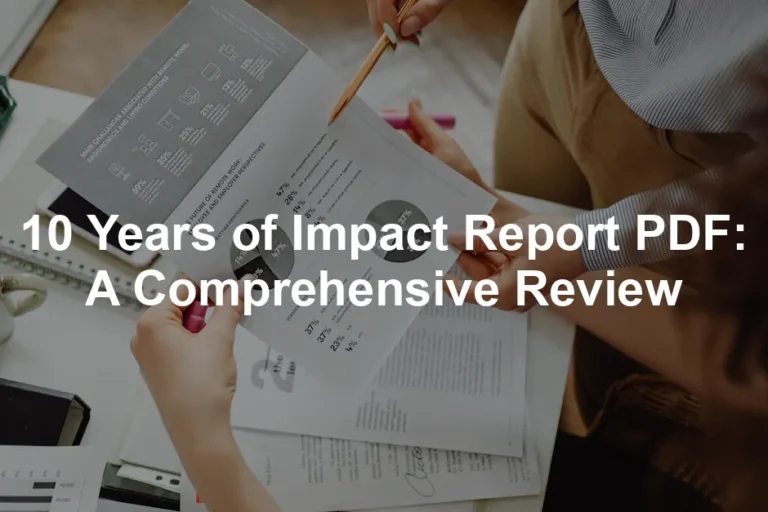Introduction
Stratified sampling is a powerful statistical method. It divides a population into distinct subgroups, known as strata. This approach ensures that every subgroup is represented in your sample. It’s essential for gathering accurate data from diverse populations. In this article, we will cover the definition, process, advantages, disadvantages, and applications of stratified sampling.
For a deeper understanding of statistical learning, you can explore an introduction to statistical learning with python book length.
If you’re looking to dive deeper into research methodologies, consider picking up a copy of The Researcher’s Toolkit: A Guide to Stratified Sampling. This book is a great resource for understanding the intricacies of stratified sampling and can help you design your research effectively.

Summary and Overview
Stratified sampling is a technique that involves dividing a population into non-overlapping subgroups, or strata, based on shared characteristics. This differs from simple random sampling, where every individual has an equal chance of selection. Stratified sampling is particularly relevant in fields like healthcare, market research, and social sciences. It enhances research accuracy and reduces bias, as it ensures representation across all subgroups. By using this method, researchers can obtain more reliable results. The article will guide you through the definition, working process, types, advantages, disadvantages, and practical applications of stratified sampling.
For those who want a comprehensive guide on statistics, Statistics for Dummies is a fantastic read. It simplifies complex concepts, making them accessible for beginners and seasoned researchers alike.

What is Stratified Sampling?
Definition
Stratified sampling is a method that partitions a population into distinct groups called strata. Each stratum consists of individuals with similar characteristics, such as age, income, or education level. This approach aims to create more homogeneous subgroups, which enhances the precision of estimates. Identifying these subgroups is crucial; it ensures that all relevant segments of the population are represented in the sample. The goal is to minimize variability within each stratum while maximizing variability between them.
By focusing on the differences between strata, researchers can draw more accurate conclusions. This method is particularly effective when researchers want to understand how different segments of a population behave or respond to various factors. Understanding this technique can significantly improve the quality of research findings.

If you’re curious about how to measure the impact of intangibles in your business, check out How to Measure Anything: Finding the Value of ‘Intangibles’ in Business. This book provides insights that can be pivotal for your research and decision-making processes.
How It Works
Stratified sampling starts with dividing the entire population into distinct subgroups known as strata. Each stratum shares specific characteristics, such as age, income, or education level. This division ensures that every subgroup is represented in the final sample.
Once you have your strata, the next step is to conduct random sampling within each group. This means selecting individuals randomly from each stratum. After collecting samples from all strata, you combine the results to form a comprehensive data set. This combination allows researchers to analyze differences between strata while maintaining accuracy.

Key Terms
Understanding stratified sampling requires familiarity with some key terms:
- Strata: These are distinct subgroups created from the population, each characterized by shared attributes.
- Sampling Frame: This is the complete list of individuals or elements from which the sample is drawn. It should include all members of the target population.
- Sampling Units: These are the individual elements within each stratum eligible for inclusion in the sample. They can be people, households, or items relevant to the research.

Types of Stratified Sampling
Proportional Stratified Sampling
In proportional stratified sampling, the size of each sample is determined based on the proportion of each stratum in the overall population. For instance, if your population consists of 60% females and 40% males, and you aim to sample 100 individuals, you would select 60 females and 40 males. This method ensures that the sample accurately reflects the population’s structure.

Disproportional Stratified Sampling
Disproportional stratified sampling occurs when the sample sizes differ from the population proportions. This often happens to ensure representation of underrepresented groups. For example, if a specific minority group constitutes only 10% of the population but is crucial for the study, researchers might intentionally sample more individuals from that group to gain deeper insights.

Pre-stratification vs. Post-stratification
Pre-stratification involves defining strata before the data collection begins. This method allows researchers to structure their sampling plan based on known characteristics of the population. Conversely, post-stratification occurs after data collection. With this approach, researchers may identify strata based on the characteristics observed in the data. Each method serves unique purposes based on research needs and available information.

Advantages of Stratified Sampling
Enhanced Precision
Stratified sampling enhances the precision of research findings. By reducing variability within each stratum, it leads to more reliable results. This method allows researchers to draw conclusions with greater confidence, as the sample accurately represents the population’s diversity. Overall, this technique minimizes sampling error and increases the statistical power of the study.
Stratified sampling also allows researchers to analyze specific subgroups effectively. By ensuring that each stratum is adequately represented, researchers can gain insights into the behaviors or attitudes of distinct segments within the population. This approach leads to more nuanced conclusions and better-informed decisions.

For those looking to further their understanding of statistical methods, The Art of Data Analysis: How to Answer Almost Any Question Using Basic Statistics is a must-read. It unlocks the secrets of data interpretation and will elevate your research game.
Improved Representativeness
Stratified sampling stands out because it ensures all relevant subgroups are included in the sample. By dividing the population into distinct strata, researchers can focus on specific characteristics, like age or income. This way, every subgroup gets a fair chance to be represented. For example, if a survey aims to assess health behaviors, it’s crucial to include various age groups. Without proper representation, the findings may not reflect the entire population’s views accurately. This method enhances the validity of research results, leading to more informed decisions and insights.

Cost-Effectiveness
Stratified sampling is also cost-effective. By targeting smaller, more relevant samples, researchers can save time and resources during data collection. Instead of surveying a large, diverse population, they focus on specific strata that matter most for their study. This targeted approach reduces the overall number of participants needed. Consequently, it lowers costs associated with data gathering, such as travel and administrative expenses. For organizations with limited budgets, this method allows for more efficient use of funds while still obtaining high-quality data.

Disadvantages of Stratified Sampling
Complexity
Stratified sampling comes with its share of challenges. One significant drawback is its complexity in design and administration. Crafting an effective stratified sampling plan requires careful planning. Researchers must identify relevant strata and define them accurately. This process can be time-consuming and may require advanced knowledge of the population. Additionally, managing multiple strata can complicate data collection efforts. Coordinating between different groups adds layers of logistics that simpler sampling methods do not have.

Potential for Misclassification
Another risk in stratified sampling is the potential for misclassification. If researchers inaccurately define strata, it can lead to biased results. For instance, if a stratum meant to reflect a specific age group inadvertently includes individuals from another age group, the findings may be skewed. This misclassification undermines the purpose of stratified sampling. It can distort insights and lead to incorrect conclusions about the population. Therefore, researchers must invest time in correctly identifying and defining each stratum.

Resource Intensive
Stratified sampling can also be resource-intensive. While smaller samples can save costs, the initial setup and planning require significant resources. Creating strata and determining sample sizes for each can involve extensive data analysis and preparation. This aspect may not be feasible for all projects, especially those with limited budgets. Additionally, the need for more staff or specialized skills may arise, further straining available resources. For some organizations, the complexity and demands of stratified sampling may outweigh its benefits, making simpler methods more appealing.

Steps to Conduct Stratified Sampling
Step 1: Define the Population
The first step in conducting stratified sampling is defining the population clearly. This means outlining the specific group you aim to study, ensuring that it aligns with your research objectives. A well-defined population helps researchers understand the scope of their study and the characteristics they need to consider. For instance, if you’re studying high school students in a city, specify the grades, schools, and demographics involved. Defining the population accurately sets the foundation for identifying strata. It ensures that the subsequent steps in the stratified sampling process are based on a solid understanding of who is included in the study. This clarity is crucial for effective data collection and analysis later on.

Step 2: Identify Strata
Choosing appropriate characteristics for creating strata is vital. Start by considering key attributes that influence the study’s outcome. Common factors include age, gender, income, education level, or geographic location. These characteristics should reflect significant differences within the population. It’s essential that strata are mutually exclusive. This means each individual belongs to one stratum only. A well-defined stratum can lead to more accurate insights. Think about what aspects are most relevant to your research. This initial step sets the stage for effective sampling.
And if you’re looking for a practical introduction to data visualization, don’t miss Data Visualization: A Practical Introduction. This book provides fantastic insights into how to present data effectively.
Step 3: Determine Sample Sizes for Each Stratum
Deciding how many individuals to sample from each stratum requires careful thought. One approach is proportional allocation. This method samples individuals based on the stratum’s size relative to the entire population. For example, if a stratum represents 30% of the population, it should comprise 30% of your sample. Alternatively, you might consider equal allocation. This involves selecting the same number of individuals from each stratum, regardless of size. This method can be useful for studying smaller, underrepresented groups. Balancing these approaches can help achieve robust results.
Step 4: Random Sampling Within Strata
Conducting random sampling within each identified stratum is crucial for reducing bias. Start by using a random selection method, such as a random number generator or lottery system. This ensures every individual in the stratum has an equal chance of being selected. It’s important to maintain the same level of randomness across all strata. This consistency enhances the reliability of your findings. After sampling, verify that the chosen individuals accurately reflect the characteristics of their respective strata. This step solidifies the integrity of your research.
Step 5: Combine Samples
Merging samples from each stratum into a single dataset is the final step. This process involves compiling the selected individuals from all strata. Ensure that the combined sample retains the original proportions of each stratum. This helps preserve the representativeness of the overall sample. Once combined, analyze the data collectively to draw comprehensive conclusions. This step allows researchers to examine differences and similarities across strata effectively. A well-executed combination ensures that your results are both accurate and meaningful.
Applications of Stratified Sampling
Market Research
Businesses frequently use stratified sampling in consumer surveys. For example, a company may want to understand customer preferences across different age groups. By creating strata based on age, they can ensure that each group is well-represented. This leads to insights that are applicable to their entire customer base. Companies can tailor their marketing strategies based on these findings. Stratified sampling helps businesses make informed decisions, enhancing their competitive edge.

If you’re also interested in the intricacies of market research, Market Research in Practice: How to Get Greater Insight from Your Market is a fantastic resource. It takes you through the essential steps to gather meaningful insights!
Healthcare Research
In healthcare, stratified sampling plays a crucial role in clinical trials. Researchers often divide participants into strata based on health conditions or demographics. This ensures that diverse groups are included, leading to more reliable results. For instance, a trial for a new medication may sample individuals with varying ages and health statuses. This method also applies to patient satisfaction surveys. By stratifying responses, healthcare providers can identify specific areas needing improvement.

Educational Studies
Stratified sampling is valuable in academic research as well. Researchers may assess student performance across different schools or grades. By stratifying the sample according to these categories, they can gain a clearer understanding of educational outcomes. For instance, a study might focus on the impact of teaching methods in urban versus rural schools. This approach allows educators to draw insights that can inform policy and practice. Through stratified sampling, educational research can yield results that lead to meaningful improvements in learning environments.

Conclusion
Stratified sampling is a powerful tool for researchers. It enhances the accuracy of data collection and ensures representation from all relevant population subgroups. By dividing a population into strata, you can obtain more reliable and precise results. This method minimizes bias and variability, leading to stronger conclusions.
If you’re looking for a way to improve your research outcomes, consider using stratified sampling. It’s especially beneficial in studies involving diverse populations where every subgroup matters. Adopting this approach could significantly enhance the quality of your findings.
For those who want to deepen their understanding of statistical inference, I recommend Statistical Inference. This book delves into the nuances of making predictions based on data.
Frequently Asked Questions (FAQs)
What is the difference between stratified sampling and simple random sampling?
Stratified sampling divides the population into subgroups called strata. In contrast, simple random sampling selects individuals from the entire population, without any subgroup differentiation.
Why is stratified sampling important in research?
This method ensures that all subgroups are represented, enhancing overall accuracy. It reduces the risk of bias, making your findings more reliable.
How do you determine the size of each stratum sample?
Sample size depends on factors like population variability and the study’s objectives. Proportional allocation is commonly used, where sample sizes reflect the strata’s size in the population.
What are the common challenges in stratified sampling?
Misclassification of strata and the complexity of the sampling process can pose challenges. Careful planning is essential to avoid these issues.
Can stratified sampling be applied in qualitative research?
Yes, stratified sampling can be adapted for qualitative studies. It helps ensure diverse participant representation, enriching the research insights.
Please let us know what you think about our content by leaving a comment down below!
Thank you for reading till here 🙂
All images from Pexels




